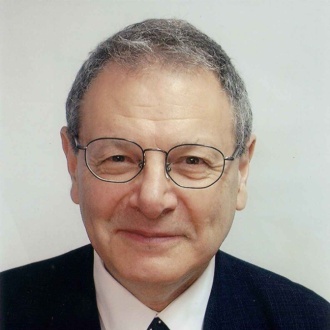Vayera: The History and Power of Prayer
An Ancient Tradition
The tradition of praying three times a day was established by the Patriarchs. Abraham established the morning prayer, Isaac established the afternoon prayer and Jacob established the evening prayer. (1)
Is the obligation to pray daily mentioned at all in the Torah?
The Biblical Mandate
There is no explicit mention of mandatory prayer in the Torah. However, the Torah does enjoin us to worship G-d with all our hearts. An ancient tradition, documented in Sifri, one of the earliest texts of Torah scholarship, translates worship of the heart to mean prayer. (4)
The Torah enjoins us to pray, but the details of this obligation are unclear. Was this intended to canonize the Abrahamic tradition of daily prayer or was it just a mandate to worship on special occasions or whenever the spirit moves us?
Jews in Moses’ generation surely knew the answer to this question, but this knowledge was unfortunately lost during the passage of time. As was the case with all Torah details that were lost over time, later rabbis were left to reconstruct the information from clues left to them in biblical texts and in ancient scripts of rabbinical scholarship. The following is a brief presentation of one such attempt made by two Torah giants of the Twelfth century.
Maimonides
Maimonides, the great philosopher and Halachisist, understood this commandment as a once daily, rather than thrice daily, obligation to pray at a time and place of our choosing. Jews continued to pray three times every day. The first prayer was in fulfillment of their biblical obligation. The other two prayers were in respect of an Abrahamic tradition that later became rabbinic law. (5)
Nachmanidies
Nachmanidies, the great Kabbalist and Halachisist, took issue with this position and argued that no aspect of daily prayer was ever mandated by Torah. (6)
Nachmanidies understood the biblical mandate as an obligation to pray in times of distress. All three daily prayers, argued Nachmanidies, were at first a tradition and later rabbinic law, but they were never biblically mandated. Nachmanidies offered many convincing arguments in support of his position.
The debate raged for centuries, but over time the tide turned toward Nachmanidies. Today Nachmanidies’ view is unequivocally accepted as the universal position on this matter. (7)
A Fundamental Concept
This leaves us to ask a simple question. If prayer is our opportunity to connect with G-d and to pour our hearts out to him, why then is it not, according to Nachmanidies, a Biblical commandment? Is prayer not weighty enough or necessary enough to be included in the select list of six hundred and thirteen?
A similar question is asked of those scholars who are of the opinion that faith in G-d is not one of the Six Hundred and Thirteen Commandments. If faith in G-d is a cornerstone of the Torah, why is it not included in the list of six hundred and thirteen?
The answer is that faith in G-d is a priori to the commandments. The commandment to believe in G-d instructs us to believe in the existence of a commander but, if we accept his commandments, have we not by definition already accepted the commander? (8)
A similar argument might be made for prayer. Prayer is, according to Nachmanidies, not listed as a commandment because a daily connection with G-d is an absolute imperative and too significant to be just one of many Mitzvos. It is an a priori without which we could not speak of other commandments. (9)
Before he issued the commandments, G-d established a format for communication, without which he would not have issued the commandments. That format was prayer and it was the support column for all the other commandments.
The Spine
Our sages spoke of the Two Hundred and Forty Eight limbs in the human body. This count excludes the spinal cord. (10) Why was it excluded?
The answer is that the human spine is not just one limb among others. It is the support column without which the others could not stand. One cannot speak of human limbs without first assuming a support column for them. The spine is not counted with the other limbs because it comes ahead of them in importance.
The same is true of prayer. The legacy left to us by our forefathers, Abraham, Isaac and Jacob, is the central support column for the entire Jewish experience. Through it we are uplifted to a higher spiritual plane. In prayer we pour our hearts out to G-d and establish a meaningful relationship with him. It is the medium through which G-d reaches out to us and it is the glue that binds us to G-d.
This is why we have three daily opportunities to pray. If you have an extra moment, consider using it to pray.
Footnotes
- Genesis 19:27, 24: 63 and 27:11. These verses do not explicitly state that the patriarchs prayed, but we know by tradition that Abraham’s awakening in the morning, Isaac ‘s journey in the afternoon and Jacob’s encounter in the night were all in reference to prayer.
- Psalsm 55: 17. See also Daniel 7: 11 for a description of Daniel’s three daily prayers.
- The great assembly was comprised of one hundred and twenty scholars who ruled over the Jewish nation upon their return to the land of Israel in 350 BCE to build the second temple. Led by Ezra the scribe, the assembly accomplished many great things: They canonized the Tanach (biblical text) standardized the prayer liturgy, enacted many laws designed to protect Torah observance and made Torah education available to the masses. For more information, see Bab. Talmud Megilah: 17b.
- Deuteronomy 11: 13
- Sefer Hamitzvos, Positive commandment #4 (Maimonides, R. Moshe ben Maimon (Egypt) 1135-1204).
- See Nachmanidies’ gloss to Sefer Hamitzvos, ibid. (Nachmanides, R. Moshe Ben Nachman, Spain 1194-1270).
- See Magen Avraham Orach Chayim 106: 2 (R. Avraham Abeli Gumbiner, Kalish, 1637-1683). See also Mishnah Brurah, ibid (R. Israel Meir Kagan, Radin, 1838 -1933).
- The majority of codifiers counted faith in G-d as one of the six hundred and thirteen commandments. However, Nachmanidies (in his gloss to Sefer Hamitzvos #1) quotes the above-mentioned concern in the name of Baal Halachos Gedolos.
- Abarbenel (Rosh Emunah chapter 4) provides the following justification for counting faith as one of the commandments: The commandment to believe is comprehensive and not limited to faith in the mere existence of a commander. It includes the obligation to believe in G-d’s perfection and in the necessity of his existence (Don Yitzchak Abrabanel- Spain-1437-1508).
- Mishnah Oholos 1: 7. The vertebrae are included but the spinal cord itself is not.

























